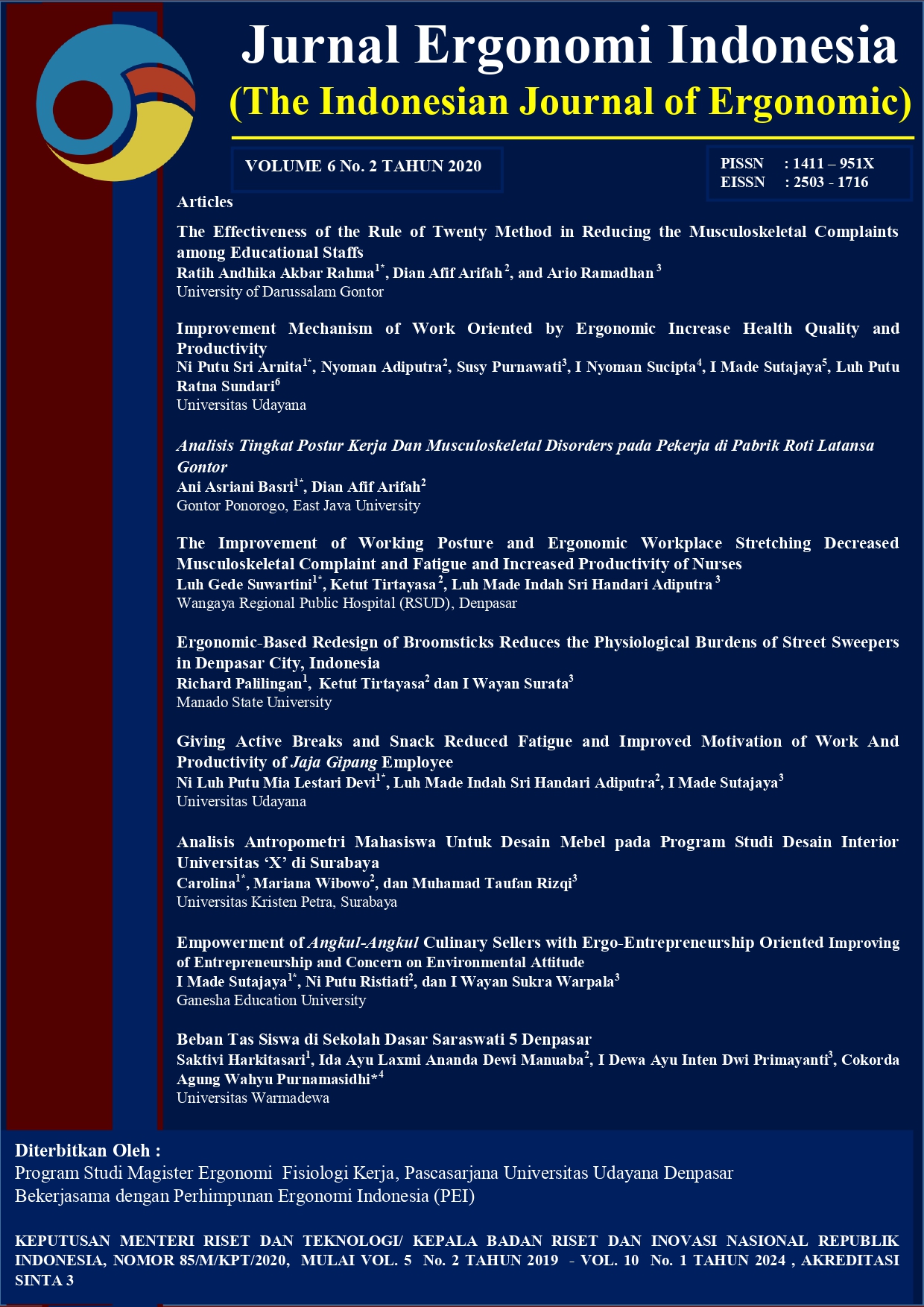The Effectiveness of the Rule of Twenty Method in Reducing the Musculoskeletal Complaints among Educational Staffs
Abstract
Educational staff at the University of Darussalam Gontor sit in front of the computer screen for quite a long time, causing musculoskeletal complaints. Applying the Rule of Twenty (RoT) method is one way to minimize the risk of musculoskeletal disorders. This study aimed to measure the effectiveness of the Rule of Twenty methods in reducing the risk level of complaints of musculoskeletal disorders for the educational staff of the University of Darussalam Gontor. This study was a pre-experimental research with one group pre-test – post-test design. The population in this study was the entire 68 educational staff of the University of Darussalam Gontor. Twenty-one (21) staff involved as a sample in this study and selected by purposive sampling method. The Nordic Body Map instrument was used to measure musculoskeletal complaint levels before and after the rule of twenty methods applied. Data were analyzed using the SPSS program version with autocorrelation test and paired t-test (CI: 95%). The measurement results of musculoskeletal disorders among 21 respondents before and after the application of RoT were the level of action 1 (low-risk level). The result of the autocorrelation measurement showed that the value of Durbin Watson (DW) was 1.958 and DW (1.968)> DU (1.8116), indicates that there was no autocorrelation between variables. The paired t-test showed the value of t = 5.760 and p = 0.0001, indicates a significant difference between musculoskeletal disorders before and after the application of the Rule of Twenty Method (p<0.05). Based on the result, this study found that the Rule of Twenty Method is effective in reducing the musculoskeletal disorders of the Educational Staffs, and potentially reduce 9.4% of musculoskeletal complaints among workers.
Downloads
References
Prawira, M.A., Yanti, N.P.N., Kurniawan, E., dan Artha, L.P.W., 2017. Factors related to musculoskeletal disorders on students of Udayana University in 2016. Journal of Industrial Hygiene and Occupational Health. Vol 1(2):101-118.
Rahma, R.A.A., 2012. “Hubungan Postur Kerja Operator Crane Dengan Keluhan Musculoskeletal Disorders Di Pabrik Slab Baja 1 PT. Krakatau Steel Cilegon Banten” (thesis). Surakarta: Sebelas Maret University.
Rosenfield, M. (2013) Visual Acuity: What is 20/20 Vision, Available at https://www.aoa.org/newsroom/five-tips-for-a-lifetime-of-healthy-vision (Accessed: 18 April 2019).
Tarwaka (2010) Ergonomi Industri. Second Edition First Printing. Surakarta: Harapan offset.
Tofan, A.P., Eka, R., and Rahma, R.A., 2017. Analysis of Factors Causing Musculoskeletal Disorders using Rula (Rapid Upper Limb Assessment) Method in Computer Operators. International Journal of Applied Environmental Sciences. Vol. 12(2):323-340.

















